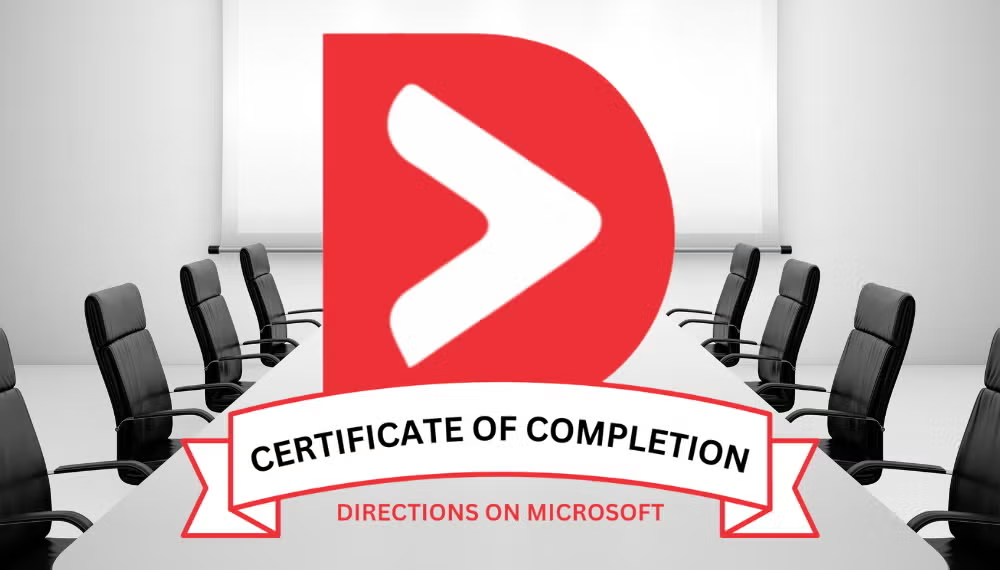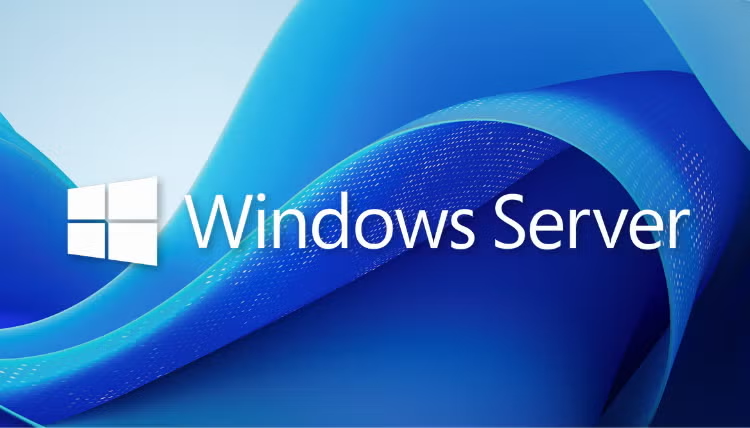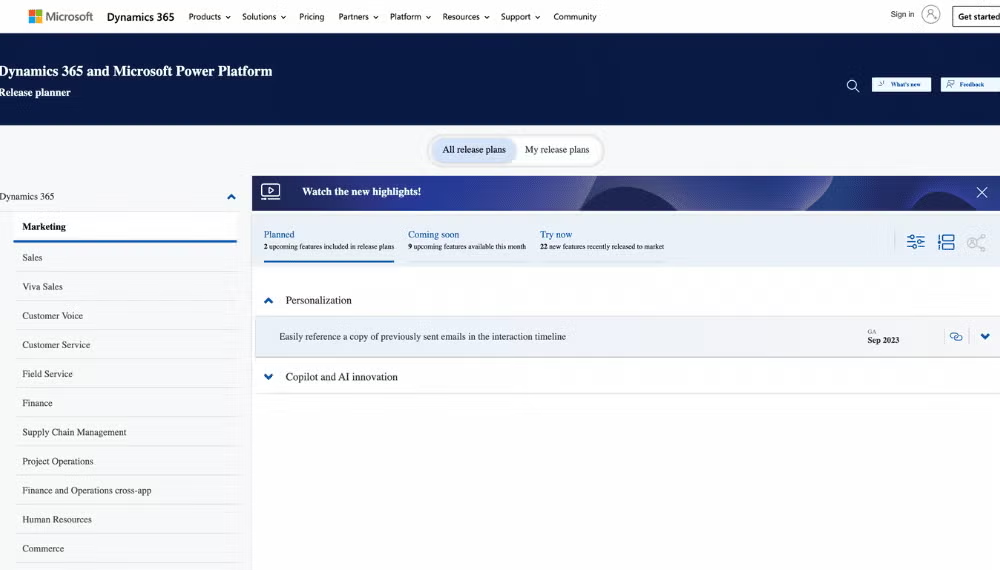Deep Dive: Understanding Microsoft Licensing
Where Do I Start?
“I wish someone had told me that before we got started.”
Microsoft technologies are likely already an essential part of your organization’s IT operations. It’s a dependency that puts you at risk in two big ways. First, you’re subject to escalating costs linked to the constant need for newer and more expensive sets of Microsoft technologies. Second, you’re under the never-ending threat of a Microsoft audit for license non-compliance – something it won’t hesitate to do whenever it needs to feed its relentless revenue-growth engine.
To keep these risks contained, you need to understand Microsoft licensing.
For a variety of reasons, Microsoft doesn’t make licensing easy. Doing so is not important to Microsoft executives. It’s not even on their radar. (See “Why is Microsoft Licensing So Complex?”) But at Directions on Microsoft, making Microsoft licensing comprehensible, and giving customers the knowledge, insight, and coaching they need to stay compliant and control costs, IS our mission. It has been for more than 30 years.
That’s why we have crafted this overview (download as pdf), at a roughly 200-level of how Microsoft licensing works. It’s a sample of what we do here.
Our explanation of Microsoft’s licensing structure and rules doesn’t require prior experience or an in-depth knowledge of the products, technologies, or services that are covered. You won’t be a Microsoft licensing expert after reading this, but you will be a lot smarter and savvier about approaching Microsoft licensing and much better equipped for conversations with your IT, procurement, and legal teams—and in addition with your Microsoft account reps or reseller partners.
Licensing Fundamentals
Customers never “own” Microsoft software or services. They license the right to install, run, and use them.
The terms and restrictions that apply to these licenses cover a lot of ground.
They can determine permitted substitutions, such as the ability to install and use older product versions. They can limit your ability to move licenses between users and devices as your needs change. They can restrict purchase of less expensive licenses to only those users who meet strict criteria. They may establish prerequisites for upgrades or scenarios that don’t require licenses (such as for external users).
Licensing Yin and Yang: Rules and Programs
In this Deep Dive on licensing basics, we are focusing on “licensing rules,” not “licensing programs.” Rules and programs are like the yin and yang of Microsoft licensing. The rules determine which licenses an organization needs to buy to perform specific tasks. The yang is license programs—the contract types Microsoft creates to allow customers to buy its products. There are many different contracts because of the wide variety of customer types (government, for-profit, non-profit, academic), organization sizes, and delivery channels.
Although your choice(s) of licensing programs will have some effect on how you negotiate, transact, administer, and interface with Microsoft and its partners, they will have minimal impact on the licensing rules. And it’s important to understand the rules before engaging with licensing programs.
Some Key Definitions
Below are some terms worth understanding before we dive into licensing rules.
Product
In the context of this article, a “product” is any Microsoft-hosted online service or Microsoft-authored software that the company sells to organizations.
Access (or “use”)
This describes the case via which a user, client device, or autonomous code interacts with a Microsoft online service or software. This access usually triggers a licensing requirement (one occasional exception: narrowly defined use cases by non-employees). Though not explicitly defined by Microsoft, “access” is used very broadly by the company to include any type of read, write, or create operation. Rule of thumb: if you are wondering whether a particular scenario constitutes “access” (and thus requires purchasing licenses), assume it does unless Microsoft unequivocally states otherwise.
Online services
Online services are powered by Microsoft-authored code running and maintained within Microsoft’s datacenters. Exchange Online, which provides e-mail and calendaring, is a popular example. Although customers might expect Microsoft’s online services to enforce license compliance—in other words, to automatically restrict use when customers have the wrong type or an insufficient quantity of licenses—this only sometimes is the case. For many online services, or components within online service suites, monitoring and maintaining compliance is the customer’s responsibility.
Software
Software is Microsoft-authored code that can be installed and executed on a customer’s own hardware (“on-premises”) or “in a cloud,” which includes virtual machines hosted at third party service providers. Software product examples include Microsoft Word and SQL Server. Only with limited exceptions does Microsoft software enforce license compliance.
Durability of rights
Durability of rights is a high-level attribute that separates subscription licenses from traditional perpetual licenses. Subscription licenses are roughly the equivalent of renting an asset with ongoing financial obligations. Perpetual licenses provide a customer with a continuing right to use a product after paying for it once.
Subscription Licenses
Subscription licenses require an ongoing payment and provide rights to use a product or service only for as long as the subscription fee is paid. They are always used for online services and sometimes required for software products run on-premises, such as the latest versions of SharePoint Server. Subscription licenses are much like entering a lease and generally represent an operating expense (opex).
Many subscriptions require a minimum duration commitment, ranging from one month to many years, depending on product and purchase agreement type. Others have no set duration requirement, with charges ceasing to accumulate as soon as the customer stops her/his use of the service.
Perpetual Licenses
Perpetual licenses provide the right to use a product in perpetuity (though they don’t offer any guarantees around support in perpetuity) and are tracked as an asset, or capital expense (capex) on the corporate balance sheet. Perpetual licenses are available for most Microsoft software but never for online services. Microsoft is slowly but consistently phasing out existing perpetual licenses and replacing them with subscriptions.
On customer orders, perpetual software purchases are typically noted as “License-only” (with fee paid upfront); license combined with one to three years of Software Assurance (see below) coverage (“L&SA,” paid either upfront or divided across multiple annual payments); or “SA-only” (typically an annual payment).
Software Assurance (SA)
Software Assurance (SA) is a subscription-based add-on to a perpetual license. SA adds rights to new software versions—and for some products, rights to deploy the software in specific scenarios. Be warned: customers can end up paying for “new version rights” for a product even when no new version ever arrives during their coverage period. SA also can limit when and how customers can cut back on purchase volumes if needed.
Podcast
Get Ready for Microsoft’s Coming Licensing Changes (with Directions analyst Dean Bedwell)
4 Licensing Units of Measure
Microsoft has four main licensing units of measure that determine how customers are charged. These four—Per-User, Per-Device, capacity-based, and consumption-based—are used across Microsoft product types and purchase agreements. For some products, two or more measures are used to assess fees, and in some cases, customers may have the ability to select which unit of measure, or combination of measures, they prefer to use.
1. Per-User Licenses
Per-User licenses are priced per individual person and provide the right for that individual to access a product or service, typically from any device. For example, a Per-User license for e-mail is assigned to one person, allowing that person to access her/his account and e-mail from any device. The two commonest Per-User licenses are User Subscription Licenses (User SLs), mostly for online services with prices quoted per user per month, and User Client Access Licenses (User CALs), used for traditional on-premises server products with prices quoted in a variety of forms (see “Perpetual licenses” paragraph above).
Per-User works like a gym membership, in which users are charged per month and have picture ID cards entitling them (but not their friends or family members) to use the facilities whenever they want.
2. Per-Device Licenses
Per-Device licenses are charged by device, either a client device or server. In the case of a client device such as a PC, a Per-Device license provides the right for any user to access the associated product through that device. For example, Per-Device licenses are often used for sharing customer relationship management (CRM) software on call-center computers across shifts. The two commonest Per-Device client licenses are Device Subscription Licenses (Device SLs), used for online services with prices typically quoted per device per month, and Device Client Access Licenses (Device CALs), used for traditional on-premises server products with prices quoted in a variety of forms (see above). The second form of Per-Device licenses are server licenses, which provide the right for a physical server to run a particular server-based product, such as SharePoint Server.
Think of Per-Device like home-gym equipment. You buy it, and anyone you allow can use it.
3. Capacity-based Licenses
Capacity-based licenses provide the right to use a product or service up to a specified resource limit, with prices quoted based on some type of size metric. One example is a cloud service that is powered by a predefined number of processor cores and amount of memory and pre-allocated storage. A second example is a physical server (or virtual machine) running Windows Server and SQL Server utilizing a set number of computer processor cores. Although capacity-based licensing requires the customer to calculate a usage high-water mark (and pay the same amount regardless the level of use), it also helps cap the cost of using the product.
Capacity-based is like an add-on to your gym membership that allows you to sign up for and attend any number of yoga classes the gym hosts during a given month. But you still must pay if you don’t go.
4. Consumption-based Licenses
Consumption-based licenses, unique to cloud services, provide the right to use a service with charges based on how much of it is used, similar to the way utilities charge for electricity. Consumption-based services are charged using various measures and increments often unique to the specific service. For example, Azure Storage charges monthly for the number of GBs of space required to store customer data. Other services, such as Azure Machine Learning, charge based on the number of hours required to complete a specific task.
Consumption-based is similar to drop-in gyms, where users only pay a fee when they go in and work out.
Video
Directions Cofounder Rob Horwitz explains Microsoft’s 4 Licensing Units of Measure.
Licensing Models
Licensing models are frameworks where everything is brought together. License models determine how a customer is charged for using a product or service and the terms governing its use. Microsoft license models vary by product and service with each having its own nuances, making budgeting, purchasing, and compliance challenging.
In general, a license model for a product or service does the following:
- Defines the applicable license types used (Per-User, Per-Device, capacity, consumption)
- Specifies how the quantity of each license type is determined, including special cases where no license or a special category of license is required
- Provides formulas for calculating capacity– and consumption-based charges
- Enumerates purchase prerequisites (for example, a dependency on one or more other products)
- Defines boundaries for usage and installation (for example, the maximum number of installations allowed)
- Details when substitutions are permitted (for example, the right to deploy a previous version).
Most Microsoft products and services can be grouped under three main licensing model categories: online services, desktop software, and server software.
Avoid Costly Mistakes with Directions’ Microsoft Advisory Services:
Contract Negotiation Support
Microsoft Strategy Assessment
Self-Audit and Audit Defense
Expert Desk
Microsoft sales, negotiation, and audit tactics are highly effective at leading customers to overspend. Directions Advisory Services level the playing field.
Online Services
Delivered via Microsoft’s cloud, online services include:
- Applications for e-mail,
- Customer relationship management (CRM),
- Enterprise resource planning (ERP),
- Business reporting, and
- Services for developer and IT management that collectively can replace traditional on-premises datacenters.
Shared Online Services Licensing Challenges
The following are licensing challenges shared across all Microsoft online services, though each service also has its unique licensing risks.
Predicting costs inaccurately.
Before going live, customers find it difficult if not impossible to accurately forecast costs for a new solution, especially for solutions that use multiple Azure services, which is common. Often the only way to accurately forecast ongoing cost is to go live in production and monitor charges for several months.
Further complicating matters, a growing list of online services provide users with the ability to purchase plans on a credit card (self-service), bypassing internal purchasing processes. Although IT personnel can turn off self-service purchasing, monitoring these capabilities requires continual vigilance.
Losing negotiation leverage.
After they are heavily invested, customers often determine that leaving Microsoft’s cloud is a monumental and expensive undertaking. Over time, “walking away” becomes a less and less credible negotiation gambit, degrading a customer’s ability to negotiate favorable pricing and other licensing terms.
Paying for unnecessary services.
Cloud environments tend to grow over time, and most customers find that they accumulate underutilized resources that are not properly sized or shut down or that are not licensed in the most efficient manner. For example, customers might have leftover VMs running in a test environment or Azure storage that is not properly cleaned up. It is up to customers to create systems and procedures to review deployments on a routine basis and identify potential cost-saving opportunities.
With on-premises systems, customers are often forced to make deliberate decisions (such as acquiring additional hardware) when they hit processing power, storage, and other limitations within their datacenter. Not so with the cloud, given its essentially unlimited resources.
Running afoul of license tracking and compliance.
Many Microsoft cloud services—especially Microsoft 365 and Dynamics 365—lack sufficient built-in license controls to ensure organizations are compliant with licensing rules. Cloud services—particularly Microsoft 365’s tools for ensuring security and regulatory compliance—often do not have software mechanisms to track license usage and compliance, which can lead to organizations running afoul of the rules. The only resolution is to buy additional subscriptions for all affected users if in doubt about compliance.
Although Microsoft’s main concern to date has been growing customer adoption, if history is any guide, Microsoft eventually will focus on license compliance to maintain revenue growth.
These services, for the most part, are horizontally focused, covering a broad range of functionality that almost every organization needs. However, Microsoft does provide some industry-specific offerings and a partner ecosystem that can tailor services to specific use cases.
Online services, always licensed and sold as subscriptions, are licensed via some combination of Per-User, Per-Device, capacity-based, and consumption-based measures, with each service often having its own nuances like product-specific licensing prerequisites.
The Big Three Online Services Licensing Model Categories
Online services fall into three general categories, each with its own distinct licensing models and associated licensing challenges. The big three are as follows:
The Microsoft 365/
Office 365 Ecosystem
A set of end-user applications and supporting IT infrastructure.
- Productivity Apps
- Collaboration
- Management
- Security
- Compliance
Business Services and Tools
Dynamics 365, the Fabric data-analytics platform, and Power BI.
- CRM
- FinOps
- Business Intelligence
Azure Developer and IT Services
Building blocks used to construct custom applications.
- Compute
- Networking
- Analytics
- Management
- Data
Desktop Software Products
Desktop software products are installed on an end user’s computer or within a server-based desktop and include Windows client operating systems (OSs), Office suites (the main applications being Word, Excel, Outlook, and PowerPoint), Project, and Visio.
Desktop Software Licensing and Purchasing Basics
Many organizations deploy a combination of “traditional” desktop software products, initially shipped in the 1980s and 1990s (with successive version upgrades since), and “modern” software, first introduced in the 2010s. Although visually they look the same, they have different licensing rules, and licensing one category does not cover use of the other.
“Traditional” desktop software products are typically sold as Per-Device perpetual licenses.
They include versions of Office Professional Plus or Standard (Office suites), Project, and Visio. These products are updated every few years and installed by users or IT professionals, usually on PCs.
Microsoft is gradually phasing out purchasing through perpetual licenses and is working to convert customers to similar products licensed exclusively by subscription. Gradual is the key word here; as long as large and influential organizations continue to require perpetual products, Microsoft seems willing to continue to make them available. For example: Microsoft recently committed to delivering at least two more perpetual versions of its Office suite.
For traditional desktop software, license compliance is not built in, which means customers must create some form of audit process, usually involving a significant amount of manual effort.
“Modern” desktop software is offered exclusively by subscription, almost always Per-User.
So-called modern desktop software includes Windows Enterprise, Microsoft 365 Apps for enterprise (Word, Excel, Outlook, PowerPoint, and others), Project Online, and Visio Online. These products are automatically updated by Microsoft monthly or yearly with no option to remain on an older version for a significant length of time.
In most cases, modern desktop software has license compliance built in, preventing most forms of abuse. Most application subscriptions also provide browser-based Apple and Android applications, allowing remote or traveling users to access applications and content.
Challenges Specific to Desktop Software
Among the most challenging aspects of desktop software licenses, especially for large enterprises, is understanding how to license server-based desktops—especially when it comes to the rules about where the remote desktop is hosted.
Server-based desktops are an important deployment option that provides a secure work area for remote users and reduces the need to deploy applications to local computers.
But Microsoft complicates matters by introducing differing rules based on where the remote desktop is hosted (on-premises, in Azure, AWS, or other provider), which often makes it more restrictive and expensive to host environments on competitor clouds.
Server Software Products
Server software is installed on physical servers and/or virtual machines (on-premises or hosted in the cloud) and can be accessed by multiple users and/or applications. Whether installed in the customer’s own datacenter or at a service provider’s location, these server applications include Windows Server, SQL Server, Exchange Server, SharePoint Server, and System Center.
Server Software Licensing and Purchasing Basics
Server software (whether perpetual or subscription) is governed by licensing models that generally have a two-tier license structure, with separate licenses for servers and clients (end users or client devices), with some minor exceptions:
Server-side Licenses
Server-side licenses provide the right to run the product on the server hardware. They use a per-server or capacity-based fee, with capacity being the number of cores within the physical server or used by the virtual machine.
Client-side Licenses
Client-side licenses provide the right for clients to access the server product. The license types supported are Per-User and Per-Device (for shared devices), with some ability to mix the two types. Per-User client access licenses are available separately or bundled in other packages like Microsoft 365 suites. However, client-side licenses are not always required; for example, when SQL Server is licensed under a per-core license model.
Server software can be purchased perpetually or through subscriptions.
Perpetual licenses
Perpetual licenses for server products are purchased with an upfront fee, along with a subscription option, called Software Assurance (SA), which augments the license with various use rights, such as the right to new versions. Windows Server and SQL Server with SA include additional cost-saving benefits when the software is deployed in Azure.
Subscription Licenses
Subscription licenses for server products, by comparison, can reduce upfront costs and include all SA benefits; however, they do not provide durable perpetual rights.
5 Challenges Specific to Server Software Licensing
Server software licensing can be complex for a variety of reasons that often have far-reaching purchasing and design impacts. A few examples are as follows:
- Multiple types of server-side license models can complicate matters. Users need to understand how per-server, per-instance, and per-core licenses vary across server products. Windows Server and SQL Server, for example, force customers to choose between two or more server-side licensing options.
- SA is required for a number of key capabilities, such as the ability for licenses to cover virtualized workloads that move between physical hosts and to cover workloads on shared hardware at cloud providers.
- Rules can vary depending on where the server software is deployed. Customers have options: on-premises, Azure, AWS, Google Cloud Platform, or other clouds. Unsurprisingly, the best deals are available to those who choose Microsoft’s solutions, especially Azure.
- Substitution rules are complicated. Rules may allow a given server license to cover a previous version and/or lower edition, complicating reconciling use with licenses owned.
- License compliance can be particularly challenging because server software lacks built-in controls to ensure or measure compliance.
Most organizations run a mix of deployments with server software on-premises, in remote offices, in Azure, and in other clouds. As a result, it is up to customers to develop and maintain their own systems to do the following:
- Understand what licenses they own and rent, including the versions, editions, and license models
- Create and maintain an inventory of all deployments, across multiple on-premises locations and clouds
- Reconcile what licenses can be used for which deployments.
What’s in it for us?
Why are we freely giving away all this Microsoft licensing knowledge?
Licensing isn’t “fun” (at least for most people we know). But it’s a topic customers must understand to head off financial and other risks.
Directions on Microsoft is an information and advisory service, meaning we make money by helping customers with their licensing and negotiation questions. We believe there are major opportunities to help customers by simplifying and clarifying the rules and helping connect the dots.
If you want to learn on your own and stay up to date with what’s happening in the Microsoft licensing world, we have you covered with our monthly Update, Licensing Reference Set wiki, Webinars, and more.
If you want a structured learning environment, we hold multiday licensing bootcamps that let you dive in, whether in person or virtually, roughly every six to eight weeks.
If you want advisors—people who will be at your side to help negotiate, assist with an audit, or answer thorny licensing questions one-on-one—we can help with that, too. We routinely handle licensing issues across geographies, industries, and customer types. You may have done a Microsoft licensing negotiation or two. We’ve done hundreds and hundreds.
Directions can’t prepare you 100% to take on the daunting world of Microsoft product licensing. But we can help you get smarter about preparing for and managing it.
Your Checklist
- Educate yourself about key Microsoft licensing rules and concepts.
- Don’t assume consistency. Each Microsoft product and purchasing program brings its own licensing quirks.
- Focus your attention on the Big Three Microsoft licensing categories: online services, desktop software, and server software.
- Understand your organization’s risks and opportunities around Microsoft costs, negotiation leverage, and licensing compliance.
- Engage experts for major MS licensing events such as contract negotiations and audits.
- Don’t give up. Microsoft licensing isn’t fun or easy, but familiarizing yourself with the basics will pay off.









